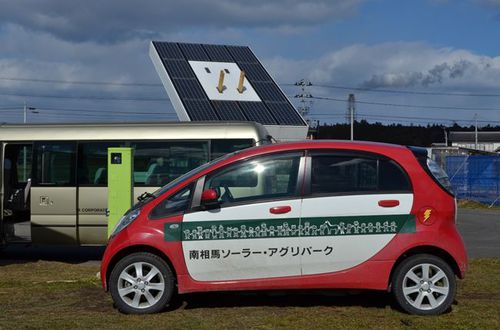March 31, 2016
Report from Fukushima: Five Years after the Great East Japan Earthquake
Keywords: Disaster Reconstruction Education Newsletter Renewable Energy
JFS Newsletter No.163 (March 2016)
On March 11, 2011, the Great East Japan Earthquake caused massive devastation in the Tohoku District, followed by a massive tsunami and aftershocks. The death toll exceeded 15,000, and nearly 2,500 people remain missing. At the same time, the disaster led to an unprecedented nuclear accident at the Fukushima Daiichi nuclear power plant owned by Tokyo Electric Power Co. (TEPCO). Five years later, the entire Tohoku region continues moving toward reconstruction, but over 80,000 people still live away from home as evacuees, particularly in areas within a 20-kilometer radius of the plant, located on the coast of Fukushima Prefecture.
On February 7, 2016, JFS joined a study tour arranged for students of JFS chief executive Junko Edahiro's laboratory at Tokyo City University. We visited areas within a radius of 20 kilometers from the plant, and the Minamisoma Solar Agripark, which was launched to nurture and train human resources for Fukushima's reconstruction. The tour was hosted by Eiju Hangai, director of the non-profit group Asubito Fukushima (Asubito means "people who open the way to tomorrow"). We visited these places while listening to the stories of what happened at the sites and details of current conditions. This JFS newsletter article is a report on the current status of what we saw during these site visits and the efforts of Asubito Fukushima, which has devoted itself to educating the next generation to play a leading role in future reconstruction.
It takes over two hours by northbound express train from central Tokyo to reach Iwaki Station, located in the southern part of Fukushima Prefecture. After receiving a warm welcome from the staff of Asubito Fukushima, we boarded their micro-bus, and headed north along the coastal highway to the areas within a radius of 20 kilometers from the nuclear power plant.
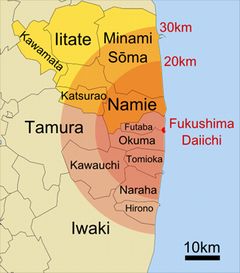
Figure by Mayhew
Some Rights Reserved.
Still Waiting to Go Home: The Residents of Naraha Town, Futaba District
The bus drove north, entered the 20-kilometer exclusion zone and came to the first town, Naraha, where the evacuation directive was lifted on September 5, 2015, after decontamination of the land was deemed complete. A large number of black plastic bags ("flexible bulk containers") filled with soil and dry grass scooped from the surface are still crammed into a temporary stock yard.
Although the evacuation directive was lifted over six months ago, only 400 residents have returned out of the total pre-disaster population of about 8,000. It has been five years since the earthquakes, tsunamis, and the nuclear accident, and many evacuees have started new chapters of their lives in other places. According to our guide Hangai, the choice for those people was a matter whether or not they really wanted to choose their home town as a place to resettle yet again .
Frozen in Time: The Town of Tomioka, Futaba District
From Naraha, our bus took us further north to the town of Tomioka, where the evacuation directive is scheduled to be lifted in March 2017. Located along the seafront, the building of the Tomioka Station of the Joban Line, operated by the East Japan Railway Company, was destroyed by the tsunami in 2011 and only a platform remains. The tsunami also destroyed the downstairs parts of neighboring houses. Since this area was designated as being in the evacuation zone, it became off-limits right after the nuclear accident, and it remains as if frozen in time, looking the same today as it did just after the disaster. Hangai said, "Toward the evacuation directive being lifted, this area is planned to be bulldozed, including the half-collapsed houses around Tomioka Station. In my personal view, I would like to have even a small part of the area left as it is, so we [as a people] never forget about this disaster, but..."
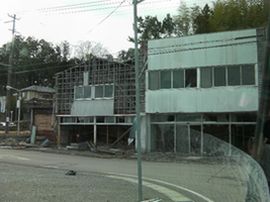
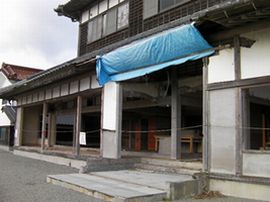
Towns Close to the Nuclear Power Plant: Okuma and Futaba, Futaba District
The town of Okuma, where the evacuation directive is scheduled to be lifted in March 2017, is home to the Fukushima Daiichi Nuclear Power Plant. As both Okuma and Futaba are located close by, they are designated as "areas where it is expected that residents will face difficulties in returning for a long time," and they are restricted from free entry all day, except for taking major roadways, with the exception of workers engaged in decontamination and reconstruction. To protect houses from burglars, the entrances of every house in these areas, even the ones not affected by the tsunami, are barricaded shut.
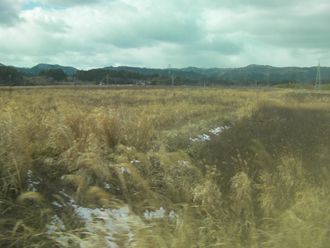
Along the public roadway are former rice fields where decontamination has not yet been carried out. They looked really rough, with shrubs one to two meters in height growing randomly. We couldn't recognize the place as being rice fields if we were not told what they were. Students who joined the tour said they felt a sense of fear, as if time had stopped, and sadness from seeing the reality.
Hangai stopped at one place where we could see a tower of the power plant under the decommissioning process and said, almost choking, "We believed that nuclear power plants were 100-percent safe. We never imagined facing such an accident and losing all the power as a result of the earthquake and following tsunami. In this respect, we cannot deny that it was a man-made disaster. As a former executive officer of Tokyo Electric Power Co., I want to apologize for what happened."
The Ghost Town of Odaka Ward, City of Minamisoma
In Odaka, the evacuation directive is scheduled to be lifted in the summer of 2016. At the time we visited, the whole area looked like a ghost town, with no people on the street, although it was the same streetscape as before, because it was not severely affected by the tsunami. After seeing the area, participants exchanged their views, saying, "Even though the houses remained safe, without people the place has lost its function as a town."
Hangai says that most of the people planning to return to town when the evacuation directive is lifted are over 65 years old. Japan is currently facing serious problems as an aging society with a low birthrate. Particularly in the areas where the evacuation order has been lifted, the age demographics today are already at the projected national average for 20 years from now. In this regard, the 20-kilometer evacuation zone is a so-called "advanced area of aging." How the area copes with the aging problem and whether it can take a leadership role in solving it will be an important case study for the future of all of Japanese society.
Minamisoma Solar Agripark
The 20-kilometer evacuation zone's boundary north of the power plant is somewhere around Haramachi Ward in the city of Minamisoma. To foster the next generation of leaders who can take on the responsibility of Fukushima's reconstruction, the Minamisoma Agripark was established and opened in March 2013 in Haramachi on former farmland and the empty lots of five houses that were washed away by the tsunami.
The Agripark includes power generation equipment that allows visitors to see and try out electricity generation using "green energy." The facility includes small-scale hydroelectric equipment that runs either by using a human-powered water turbine or pumped storage, and a solar panel manually adjustable to the most suitable direction and angle for effective generation. The students eagerly tried the generation equipment as soon as they arrived.
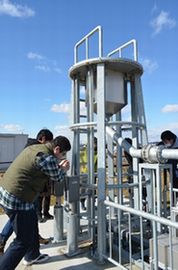
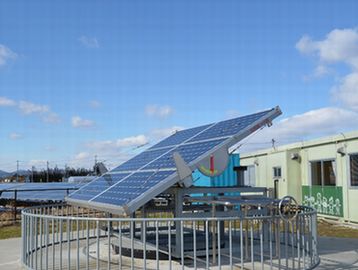
At the facility's room for training the next generation of leaders and companies, we exchanged opinions in small groups. We talked about what we found out and what we thought after visiting the 20-kilometer zone for the first time. "Even in the same 20-kilometer evacuation zone, the extent of damage varies. Some areas were severely damaged by the tsunami, leaving many houses and buildings half-destroyed. Others have the same streetscape as before but have become an uninhabited zone." One of the students said, "I saw an electric power cable near the power plant that runs towards Tokyo. I simply don't understand why the electricity generated at this power plant was transmitted to Tokyo all the way from Fukushima," which deepened discussions and the active exchange of opinions.
Small Steps, Big Dreams
Asubito Fukushima's Hangai, who has been engaged in the reconstruction of Fukushima, worries that the younger generation's outflow to urban areas would lead not only to greater economic disparities between cities and rural areas but also to gaps in human resource capacity. Thus, he came to think about how to foster human resources in the countryside.
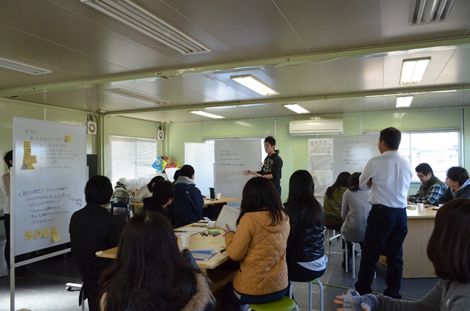
Having a sense of crisis about this situation, he launched the Fukushima Solar and Agriculture Experience Association in April 2012 to foster children and the next generation who will be responsible for Fukushima's reconstruction in the future. He thought that hands-on experiences would be the best way to educate children. That's why the association has been hosting experience-based educational activities and an open school at the Minamisoma Solar Agripark in collaboration with local elementary and junior high schools, aiming to help children develop their thinking abilities, make presentations, and take action.
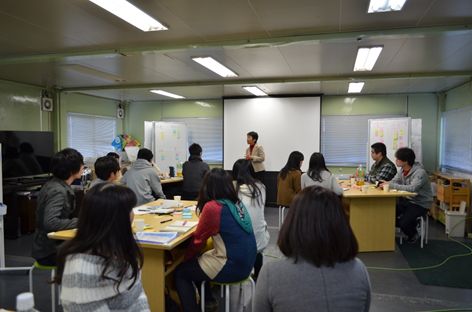
In May 2014 in the city of Koriyama, Fukushima Prefecture, the association also launched an open school for senior high school students, colloquially called "Hangai & Edahiro Juku" (juku means "school"), with JFS chief executive Junko Edahiro, to foster the young generation of reconstruction leaders in Fukushima through experiencing planning and the actual practice of running a social enterprise. As the nuclear power plant accident caused damage to the reputation of agricultural products from their beloved home of Fukushima, the students thought they wanted to do something about it. The students' editorial club started publishing an information magazine once every three months, called "Messages from High School Students: Fukushima Taberu Tsushin (Eating Fukushima Magazine)," where they compile stories and anecdotes from farmers in Fukushima, along with a supplement on the agricultural produce they painstakingly grow.
Fukushima Solar and Agriculture Experience Association to Foster the Next Generation of Reconstruction Leaders
http://www.japanfs.org/en/news/archives/news_id035284.html
Hangai is working on nurturing the human resources of the next generation, hoping that children who see adults making efforts in reconstruction come to admire them and want to be like them. He said that it would be good if such a longing would be handed down to coming generations. Under the slogan "The end is social and the means is business," he is also trying to ensure economic sustainability to continue activities of human resource development by launching a photovoltaic facility and sell surplus electricity to donate the profits to the association, whose name was later changed to Asubito Fukushima.
On top of fostering the next generation, Hangai is dealing with a corporate training program that encourages working adults to think together about Fukushima's reconstruction. It was in January 2016, when the name of the association was changed to Asubito Fukushima. Starting in the spring, a new project to develop university students into social entrepreneurs will be kicked off in Tokyo. A joint team, consisting of students who have graduated from the open school for senior high school and working adults who participated in the corporate training program, will take on the challenge of establishing social enterprises.
As mentioned above, the situations vary within the radius of 20 kilometers from the nuclear power plant. It has been five years since the disaster, but there are still many problems remaining. Even once the evacuation directive is lifted, will residents come back or not? Even if they return, will each town function as a town again or not? Then there's the critical issue in the area of a super-aging society, with the aging rate already equivalent to the national average projected for 20 years from now. JFS will keep you informed of Fukushima's efforts to address these problems through fostering the next generation.
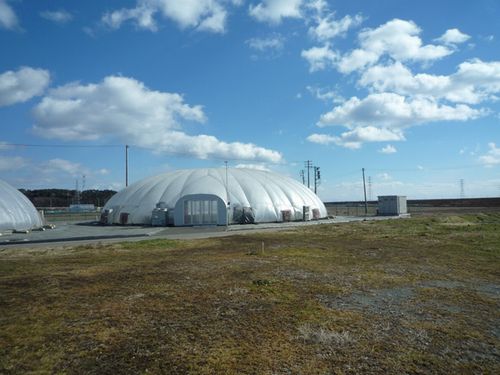
Written by Noriko Sakamoto and Naoko Niitsu
On April 6 (Wed), this article's writers, Noriko Sakamoto and Naoko Niitsu, will speak about their experiences visiting the sites described above.
Guest speakers will also include two people who dedicated themselves to disaster reconstruction in the affected region:
- Robin Lewis, International Coordinator in Disaster Relief, Peace Boat
- Angela Ortiz, Representative Director, OGA for Aid
If you live in or near Tokyo, come and join us!
http://www.meetup.com/Tokyo-Sustainability-Meetup/events/229782012/
Related
"JFS Newsletter"
- 'Good Companies in Japan' (Article No.4): 'Eightfold Satisfaction' Management for Everyone's Happiness
- "Nai-Mono-Wa-Nai": Ama Town's Concept of Sufficiency and Message to the World
- 'Yumekaze' Wind Turbine Project Connects Metro Consumers and Regional Producers: Seikatsu Club Consumers' Co-operative
- Shaping Japan's Energy toward 2050 Participating in the Round Table for Studying Energy Situations
- 'Good Companies in Japan' (Article No.3): Seeking Ways to Develop Societal Contribution along with Core Businesses


